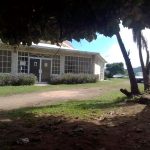
The modern Jamaican weddings have drawn a lot of influence from American and English traditions. But they are noted for their traditional customer of making rum/fruit cake for the wedding guests and sometimes frozen varieties during the first wedding anniversary. The cake has always played a major role, following Emancipation, in traditional Jamaican weddings with ‘cake parades’ taking place, either on the wedding day or the day prior to that. The celebration is somewhat similar to Scottish weddings which also include elaborate parades and processions. Old time Jamaican weddings in the country were known for their characteristic “wedden godmaddas and godfaddas” two parent figures chosen by the bride and the groom. This in essence, shows the custom of involving family and several community members in the planning and celebration of a wedding. This is very similar to African traditions. For instance, these parent figures were responsible for organizing the entire wedding event, starting from collecting funds from parents and relatives from each side, choosing volunteers and more. Over and above having their own responsibilities, these god parents helped the couple to choose their wedding rings too.
The Preparation for the Old Time Jamaican Wedding
We can obtain good information about this topic from a 1981 Skywritings article written by Miss Lou, who mentions about the variety of roles which the ‘wedden godmadda’ played in the Jamaican wedding preparations. This included helping in the selection of bridal gown, her bridesmaids as well as their dresses. There were also instances when she tailored the wedding gown herself. She even volunteered to dress up the bride and provide her with the wedding bouquet. Though the traditional choice of bridal gown had to include satin and laces, there were on embargo on the styles to be followed. It usually followed the current fashion trends. The ‘wedden godmadda’ took active part in arranging the wedding cake, decorating the ‘wedden table’ and participated in the cake parade. The ‘wedden table’ was usually adorned with ferns, flowers like bougainvillea, and seasonal fruits.
Miss Lou also explains the role of the ‘wedden godfadda’ who, on the other hand took care of the wedding reception. His role was to help the groom with his suit, organize the right kind of music and drink for the guests. Building the ‘wedden booth’ on the wedding night was also his job. The traditional ‘show bread’ is a decorated bread with magnificent twists and twirling which showcases a bird on top of it symbolizing peach or two birds which signifies love. The ‘wedden godfadda’ too charge of this piece of wedding celebration.
In a move to appease the earthly spirits so that the wedding can happened with out any untoward incident, the men would sprinkle rum around the ‘wedden booth’. Coconut fronds, prepared by the women would be used to create a matt for the posts and the beams, also called ‘buna’. Before the posts were inserted, rum was pored in the holes dog on the ground for the purpose. The roof was adorned with coconut-bough and songs like these were sung:
“Hosanna, mu bil’ me house oh, a, ha
Me buil’ it pon rocky ground, ha, ha
De breeze can’ blow it down, ha, ha
It buil’ pon rocky ground, ha, ha.”
The Food Preparation at Old Time Jamaican Weddings
Food for the builders and sugar cane juice were prepared by the women for the wedding guests. While the food was getting prepared, according to Miss Lou, the bride and groom would seek various marriage-related counseling and advice from the ‘wedden godparents’. As the approached the booth, they would be greeted by songs which were playful and aimed at teasing the couple. A song would go like this:
“Yes, me lady, yes married lady
Han’ full a ring an she can’ do a ting!”
And some with warnings:
“Teet an’ tongue mus’ meet
But blood no haffe draw, oh!”
“There’s a Wedden Here Today”
A meticulous chronicle elucidating the events of a typical and traditional Jamaican wedding day can be found in the 1981 Skywritings article written by Miss Lou. According to her, the ‘wedden godmadda’ would rise early on the wedding day and wore a starched white apron accompanied by a colorful bandana-plain head tie. She would then proceed to oversee the preparations at the church. Her next job was to ensure that the bride inserted a couple of sweet basil leaves in her shoes which would ensure good luck. Then it was time for the one of the greatest festivities of the wedding celebration to begin with ‘wedden godmadda’ organizing the cake procession in case this had not happened the previous day. The procession typically consisted of young, unmarried girls, carefully selected by her who lined up wearing white dresses standing in pairs. They stood according to height, with the shortest girl walking front alone wearing white and the tallest girl alone, at the end of the queue in black.
Dozen Girls
Even if there were less than 12 cakes, the number of girls would always stand at 12. The caked placed in the center would have 3 tiers each of which would be covered with white cloths and carried on the head. The cakes were in the sides, were never covered and always hand-carried. The procession of the girls walked through the village from the ‘wedden godmadda’s’ house to the booth singing, chanting all the way and announcing that there is a wedding happening here today. Soon the procession would be joined by several others including people from the village and the invited guests. As the procession reached the reception yard, the cakes would be placed on the wedding table to be kept in the booth, till wedden godmadda returned from the church where she had accompanied the groom. The wedden godfadda, on the other hand would accompany the bride and the bridal party, often on horseback.
The bride and groom, on arrival at the reception venue would be showered with blessings from all and then escorted to the head of the wedding table. This was then followed by one of the most exciting ceremonies of the wedding – conducted by the wedden godfadda. This was called the ‘bidding ceremony’ for unveiling the wedding cake. The procedure of this bidding ceremony involved several people trying to speed up the process of unveiling of the cake would place money on the ‘bidding plate’. The bidding amount would be whatever each person could afford. The bidding continued till the ‘wedden godmadda’ fest that the amount so collected would be enough to donate to the newly weds to start on with their lives, she would announce the unveiling of the cake. The responsibility of cutting the bottom tier would then lie with two of the cake bearers, and the person who sliced it faster than the other would be marked as the next person to marry. Wedding speeches began soon after the first piece of the rum/fruit cake was given to the newly-wed couple for sharing. The speeches, usually full of praise, would be followed by dancing. The accompanying music would usually be a mento band or from a fiddler. While people are dancing the ‘wedden godfadda’ would cut the ‘show bread’. Each of the eligible bachelors present at the wedding party were expected to buy a slice of this bread and gift it to the girl he most liked. The money collected for this would subsequently be given to the newly-wed couple as ‘brawta’ meaning ‘extra’.
Miss Lou describes the dinner which is the next event. The dinner usually consisted of mannish water, curry goat and rice, roast breadfruit, chicken and rice and peas, roast yam, boiled banana and run-dung. The drinks which were offered to the wedding guests would consist of cane liquor, rum, wine and ginger beer. The newly-wed couple would then be presented with the choicest of foods for carrying to their new home. This was done by ‘wedden godmadda’ who prepared numerous baskets while the crowd cheered and clapped. The celebrations would end for the evening, with godparents accompanying the wedded couple to their new home. But their work is still not over.
Turn Thanks Day
The first Sunday immediately following the wedding is called the ‘Turn Thanks Day’ when the newly-wed couple accompanied by their godparents as well as the entire wedding party would go to the church where the wedding had taken place, and attend service. This gesture is to offer gratitude to God for the marriage. This was followed by, according to Miss Lou, the final ceremony where the wedden godmadda would hold the bride’s right hand while the wedden godfadda would hold the groom’s and say in unison the following words: “We hand you over to one another, go and live like Isaac and Rebecca.”
SOURCES: Bennett, L. (2003). “Old-Time Jamaican country ‘wedden'” in Gambrill, L. (Ed.) (2003). A Tapestry of Jamaica: The Best of Skywritings. (pp. 79-81). Kingston: Macmillan Caribbean, Jacks, M. (2004). T The Encyclopedia of Jamaican Heritage. Kingston: Twin Guinep Publishers, (pp.510-511),The Story of the Jamaican people. Kingston: Ian Randle Publishers. Pieces of the Past by Dr. Rebecca Tortello.







